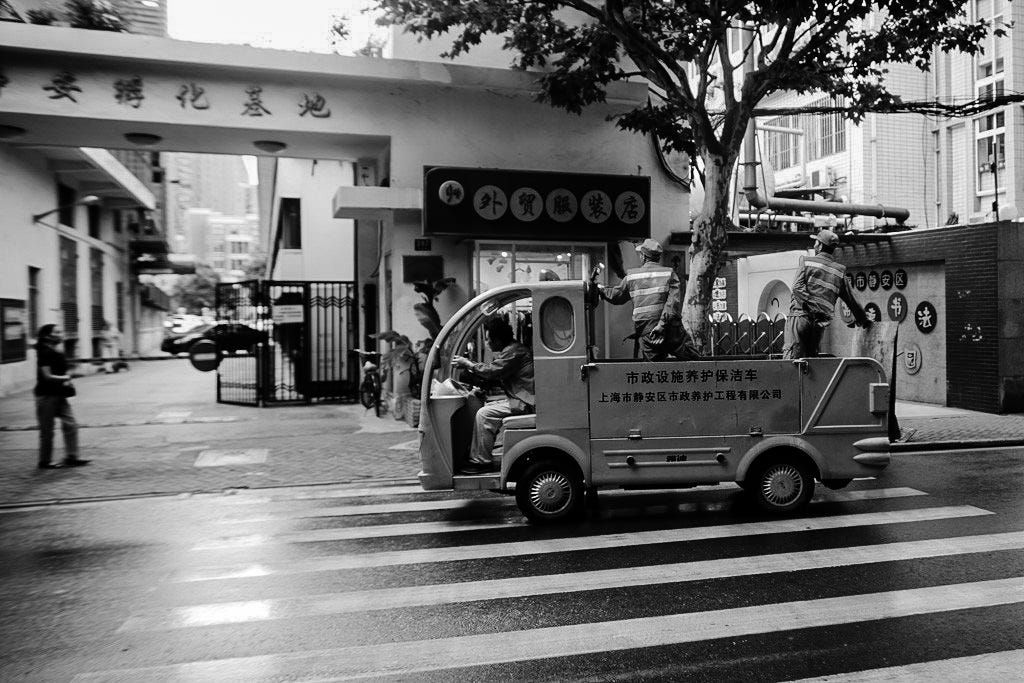15 Driver Behaviours In A World of Autonomous Mobility

These are the behaviours and practices that will mainstream in our self-driving urban landscape. Inspired by a session with an automotive client, and a follow up of the popular 12 Concept in Autonomous Mobility.
- Dringer: in jurisdictions where autonomous vehicles are required to have a human at the wheel, and where the owner wants the car to cruise in their proximity, ringer drivers, dringers, will be hired as the “driver”. The legal boundaries between jurisdictions will be marked by clusters of hired-on-demand humans, waiting to dring. A significant amplification and widespread adoption of the existing US practice of taking on additional passengers to use car-pool lanes.
- ConvoyAds: The coordination of autonomous vehicles by an advertising agency for the purpose of communicating lifestyle, and/or to engage pedestrians attention. As a simple example, a five car convoy, stereos tuned to the same content, windows wound down. More developed examples: vehicle displays and engagement with people in close proximity via social media; tightly choreographed driving to wow the audience. Already visible in a crude form in Tokyo, this will become more nuanced and globally mainstream. While ad agencies looking for an edge will get away with ConvoyAds for a while, in a race to the bottom, they will be rapidly become a social nuisance. However, over time the local authority’s own urban sensing platforms will allow them to leverage retroactive fines to the advertisers based on annoyance/engagement, creating a viable ad platform. Long term, the authorities will view ConvoyAds as a consistent revenue stream, similar to parking and speeding fines today. Cities will legislate autonomous ad-free zones, where it is illegal to show advertising from moving vehicles. (Beijing has this already with ads banned from vehicles passing through Tiananmen Square).
- Car baiting: an action by a human to trigger a response from an autonomous vehicle. Motivations include getting a date by triggering social interaction with its owner[1]; financial rewards from an insurance claims; and the very human enjoyment of being mischievous.
- Drone-car baiting: Using UAVs to trigger a response from an autonomous vehicle, from the annoyance of setting off a car alarm by landing on its roof, to flying close to its sensors to force non-avoidable accident event. This does, of course, lead to vehicles adopting anti-drone defences, the most popular and socially acceptable of which is a light directed spray mist.
- Spiral: the evasive measures adopted by vehicles take to minimise the risk of car and drone baiting. Based on the practices of pilots in war zones to spiral or corkscrew the plane as it comes into land to avoid surface to air missiles.
- CarHack: the more serious intent to subvert a vehicle and its occupants for nefarious intent.

- AVBIED: Cities worldwide will experience autonomous vehicle borne improvised explosive devices. Residents of countries where drone strikes are already common will consider this the extension of a practices that were previously limited to the US military and their allies. As anyone who has spent time in a city where VBIEDs are common will attest, you’ll never look the same at a vehicle again.
- Modesty windows will sense when the vehicle’s occupants are asleep and/or engaged in a highly personal activity (HPM) and automatically kick in.
- Bare-backing is to engage an autonomous vehicle with a viable fake identity that it is enabled for travel. Needs to be combined with sensor loading, that identifies which in-vehicle sensors need to be fed, and which are OK to simply block.
- When every vehicle can be traced to an owner, every annoying car alarm can also be traced back to that owner. Alarm-Karma is a simple UAV app that measures the annoyance of any given car’s alarm on a community, and pays it back to the owner through activities such as trailer trashing, tapping on windows in the middle of the night.
- The prevalence of capatcha street furniture, itself autonomous and reconfigurable, introduced by residents looking to filter out autonomous vehicles from passing through their neighbourhoods. Introduced by one of the early pioneers of Baidu’s Self Driving Car project, with an acute sense of algorithm. (The opposite will also be true, with human-drivers filtered out of many contexts, it will be interesting to see how our cities are carved up.)
- There will be a widespread questioning of what constitutes punishment for anti-social behaviour such errant parking, and the ability to identify and transfer payments between the inconveniencer and the inconveniencee will lead to new forms of auto-fines, where fines are levied, and settled automatically.
- Autonomously Driving While Black (ADWB). The racial profiling of black drivers by white officers in the USA will continue with some subtle nuances. The prevalence of in-car sensors and the ability to more easily create a persistent trace of police officers will shift accountability, as will the ways in which those officers side-step accountability. Everyone (except most caucasians and a few Comp-Sci ABCs) will appreciate the chilling phrase “please turn off the engine, step out of the vehicle and step to the side” as a way of pulling the driver out of range of car cams and passenger camera phones. Popularised in another Spike Lee Joint.
- The rise of auto-fines, will reduce the number of human-mediated traffic stops and, by taking a human out of the equation, you would expect it to reduce the prevalence of ADWB. However, the inherent racial/skin tone bias in the auto-fine software algorithms, means that human officers are more likely to be involved. Humans write code, that code includes the biases of those humans. ADWB figures will remain stubbornly high.
- To go vinyl. Full manual, no sensors.
- To drive the line. For a human to successfully mimic a fully automated self-driving car, sensor glitches and all.
[1] An equivalent is speed dating in Iran where, after a speedy/noisy courtship, two vehicles simulate an accident to enable their drivers and occupants to enjoy face to face time, and swap insurance details.
If you like this, you’ll appreciate Kabul: A Walking Tour, Bribing the Driver, and the strangely popular 12 Concepts in Autonomous Mobility. I’m a photographer, and the founder of Studio D Radiodurans. Hire us to help you figure out and design for a better future.
Follow@studiodradiodurans on Instagram. Enjoyed this? Click [heart] so others can too.

